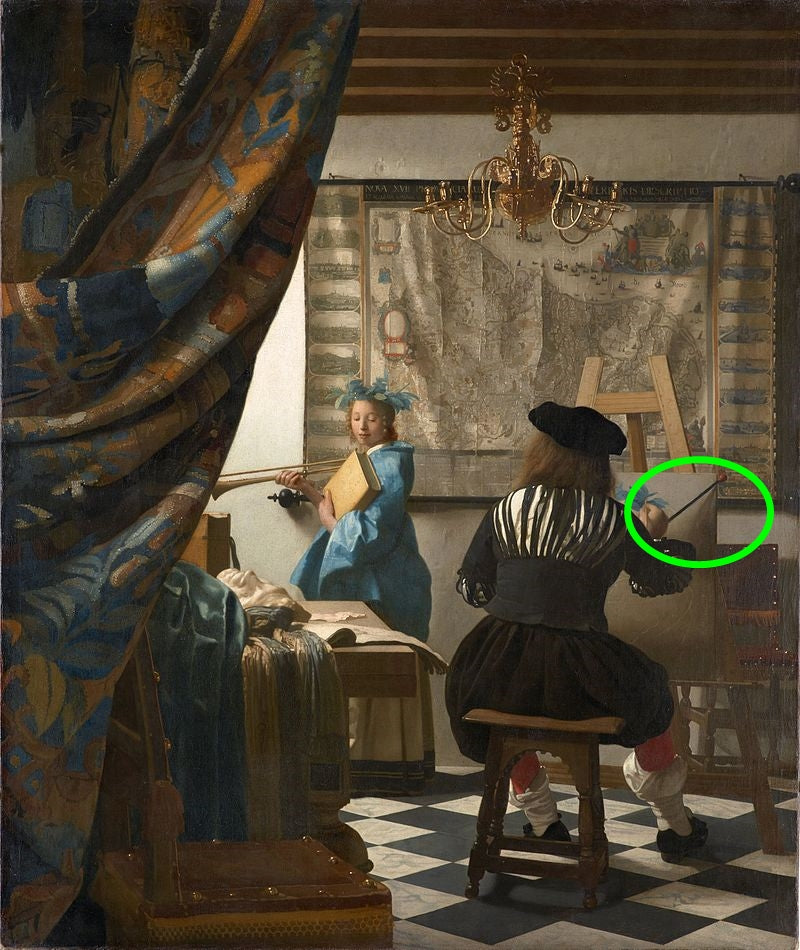Optical Tools for Artists: Revolutionizing the Artistic Process
Introduction:
Artists have always sought innovative ways to improve their skills and create stunning, lifelike pieces. Optical tools for artists, like comparator mirrors and camera obscuras, are not only valuable for enhancing accuracy and perspective but also for inspiring new creative methods. In this blog post, we will explore various optical tools that can elevate your artistic process and discuss how they can be used effectively.
1. Comparator Mirrors: Unlocking the Tools of The Old Masters

Comparator mirrors, such as those found at Vermirror.com, are the perfect tool for artists looking to capture accurate proportions and perspectives. Inspired by the groundbreaking documentary Tim's Vermeer, these mirrors allow artists to compare their work to a reference image or subject directly, making it easier to spot discrepancies and correct them in real-time.
- How to use a comparator mirror: Set up the mirror at a 45-degree angle between your canvas and the subject you are painting or drawing. This will allow you to see both the subject and your artwork in the mirror simultaneously, facilitating easy comparison and adjustments.
- Camera Obscura: A Time-Tested Technique for Perfect Proportions
The camera obscura is an ancient optical device that projects an image of the scene outside onto a surface inside a darkened room or box. This technique has been used by artists for centuries to study perspective, proportion, and composition.
- Creating your own camera obscura: You can build a simple camera obscura using a cardboard box, a small hole or lens, and a translucent screen. This DIY approach allows you to project an image onto a surface and trace it, ensuring accurate proportions and perspective in your artwork.
- Art Projectors: Modern Tools for Accurate Scaling and Tracing
Art projectors are a contemporary alternative to traditional optical tools for artists. These devices project an image or reference onto a canvas, allowing you to trace and scale your artwork with ease. Digital art projectors also offer advanced features like image editing and grid overlays for more precise alignment and composition.
- Choosing the right art projector: When selecting an art projector, consider factors like portability, image quality, and connectivity options. You may also want to explore features like adjustable brightness and image editing capabilities, which can enhance your creative process.
- Grid Drawing: A Classic Method for Capturing Details
Grid drawing is a time-tested technique that involves overlaying a grid on both the reference image and the canvas to help artists accurately reproduce the image. This method can improve an artist's ability to capture details, proportions, and perspective in their work.
- Implementing grid drawing: You can create a grid on your reference image and canvas using a ruler and pencil or by using digital tools like Photoshop. This approach can be particularly helpful for artists working on large-scale projects or those looking to refine their drawing skills.
Conclusion:
Optical tools for artists have played a significant role in shaping the history of art and continue to be valuable resources for creators today. Whether you're a seasoned artist or just starting your creative journey, embracing these tools can help you achieve greater accuracy, perspective, and overall artistic mastery. Explore the world of optical tools, such as comparator mirrors at Vermirror.com, and discover how they can revolutionize your artistic process.

